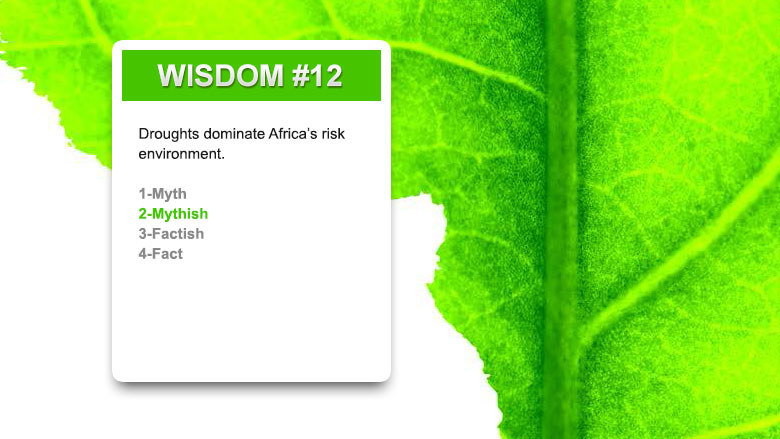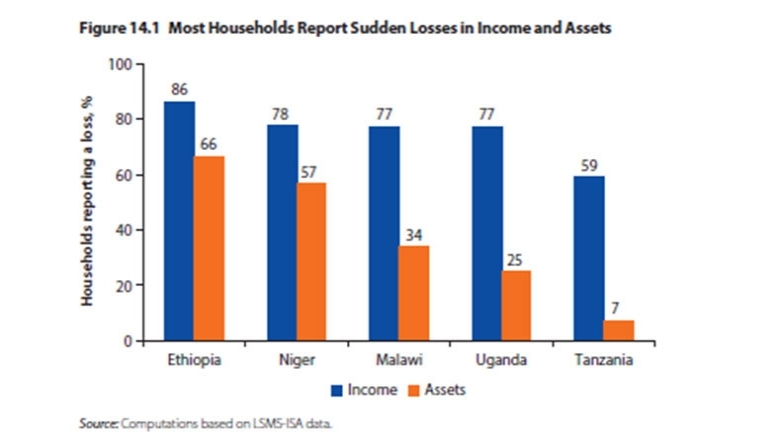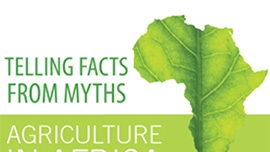COMMON WISDOM # 12: Droughts dominate Africa’s risk environment
SCORE: 2 - Mythish
FINDINGS
The shocks:
- More than 60 percent of households report sudden losses in income and assets.
- Weather shocks are very common, but price risk is just as prevalent. Death and illness were also frequently reported.
- Health and weather shocks are often repeatedly experienced by the same household. Price risk is by far the most commonly reported covariate shock, much more so than weather shocks.
- Risk is higher in rural areas, particularly risks to income. Rural households are more susceptible to income shocks because agriculture is a risky business.
- Female-headed households are less susceptible to agricultural price risk, but more susceptible to food price risk.
The coping mechanisms:
- Many households have no means to cope with shocks.
- Savings are the most widely used coping mechanism, but have a more limited role for poor and rural households, which, as a result, rely more on their assets.
- Working more (sometimes involving migration) is a common coping strategy in rural areas.
- Government assistance is limited. Social assistance is most often informal and is the most prevalent coping mechanism among households headed by women.
POLICY MESSAGES
- Reducing the risk associated with agricultural livelihoods is an important part of reducing volatility for households in Africa. This can be done by increasing access to irrigation and drought-tolerant crops and by improving the integration of domestic crop markets.
- Strengthening financial markets to provide financial products as buffers in periods of distress should be part of the development strategy, especially for rural areas.
- Improving and strengthening national social protection systems as well as formalizing social transfers would also help the most vulnerable in smoothing the impact of risk.


